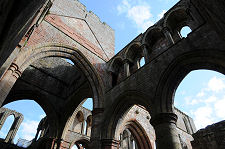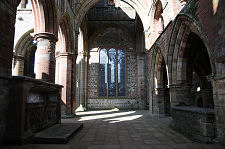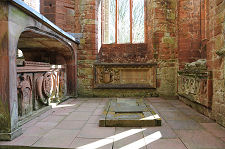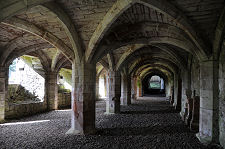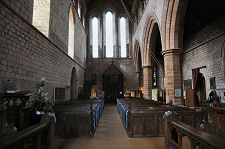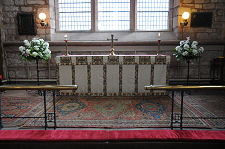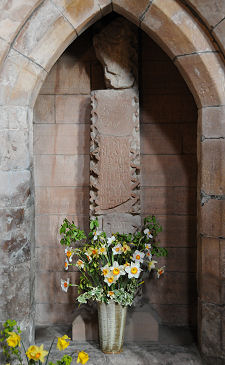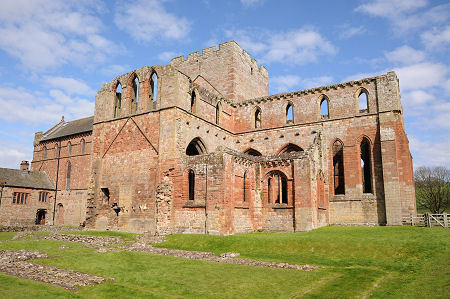 Lanercost Priory from the South-East |
Lanercost Priory stands in a quiet and attractive setting in the valley of the River Irthing some two miles north-east of Brampton. What visitors find here is the substantial remains of an Augustinian priory dating back to the late 1100s; an active parish church occupying the nave of the priory church; a welcoming cafe and shop; and a collection of other fascinating buildings, some in private ownership, some available as holiday lets.
Visitors to Lanercost Priory should normally head for the visitors' car park towards the southern end of the site (the near end as you approach from Brampton) rather than the much smaller car park reached through an arch in the old priory gatehouse a short distance further along the road. From the car park you look across to one of the ranges of buildings making up the Abbey Farm, which is home to the cafe and shop.
From the car park you can make your way around the roadside end of the buildings, following a path which heads past the remains of the priory gatehouse before approaching the west end of the imposing priory church, now home to the parish church. Two points of interest are provided by the wooden cross, complete with a metal Christ, off to one side, and the stone base of the Lanercost Cross, standing in the field to the north-west of the priory. The attractive range of buildings to your right forms the vicarage, which is private, and comes complete with the tower house known as the Vicar's Pele, which appears to have formed part of a prior's residence built in the 1300s.
We'll look at the Parish Church shortly, but for the moment let's assume that you are going to start your visit in the remains of the priory, which are in the care of English Heritage. The reception and gift shop is in what was originally the slype, a passage giving access between the outside world and the cloister.
Which makes it no surprise that the first area of the priory you enter beyond the reception is what remains of the cloister. From here you begin to appreciate the bulk of the priory church, to your left, while to your right the apparently complete west range of the cloister stretches away to meet its south range, which appears - correctly as it turns out - to have been chopped off above ground floor level.
The west range was converted to become a residence by the Dacre family after the dissolution of Lanercost priory. This involved the construction of what has since been known as the Dacre Hall within the range. This can be accessed from the west side of the building rather than from within the cloister, and now serves as a village hall for the local community. The Dacres also built the Dacre Tower whose shell still stands at the southern end of the range. The south cloister range would have originally served as a refectory for the priors and a warming room. Today only the undercroft remains, offering an insight into just how finely built the domestic buildings of the priory would have been.
Nothing remains above ground level of buildings that would once have enclosed the east side of the cloister, though the lines of foundations of a dormitory and two different chapter houses can be traced on the ground. The absence of the buildings here does mean that the modern visitor can appreciate the best possible view of the priory church, which is from the south-east corner of the site.
The remains of the priory church itself can be accessed through a doorway in the west wall of the south transept. From here you can see the way the ruins still stand to the full height of the original church, something that is especially striking when you stroll through the crossing below the tower. The nave of the priory church remains in use as the parish church, and if you stand with your back to what is now its east end, you can look ahead along the length of the presbytery, left and right into the north and south transepts respectively, and over into the chapels constructed in both angles between the transepts and the presbytery.
The chapels are home to some very striking tombs. These include the imposing tomb of Sir Humphrey Dacre, who died in 1485, and his wife Lady Mabel. Rather more recent is the tomb of Charles Howard, 10th Earl of Carlisle, designed by the architect Robert Lorimer and placed here following the Earl's death in 1912. But without doubt the most poignant memorial is a life size terracotta effigy of Elizabeth Dacre Howard, who died on 17 July 1883 at the age of just four months.
To enter the parish church, more properly known as the Priory Church of St Mary Magdalene, you head back out through the priory reception and go into the main west door. The nave of the priory church had been used as a parish church since the 1300s, so it seemed natural for it to continue as such after the dissolution. By the end of the 1600s the nave was in such a poor condition that only the north aisle was in use, but the nave was restored to full use in 1747. Today you find yourself in an attractive space comprising the nave and north aisle, with a chancel at its eastern end formed from what was originally the eastern bay of the nave. Three tall windows in the east wall mean you never forget the rest of the priory church, whose gaunt ruins can be seen beyond.
The parish church reflects the patronage of the Dacre family and later the Howards, the Earls of Carlisle, and there are some exceptional stained glass windows on display. But perhaps its greatest treasure is to be found in the blocked doorway at the west end of the aisle. Since 1888 this has been home to the shaft of the Lanercost Cross, whose base stands in the field outside. An inscription dates the cross to 1214.
Lanercost Priory was founded by Robert de Vaux, son of a man appointed to the lordship of Gilsland by King Henry II after the English captured the region from the Scots in 1157. In about 1169 Robert de Vaux invited the Augustinian order to establish a community here, and granted them extensive estates in the area to provide the community with an income. Those building the priory made extensive use of stone taken from Hadrian's Wall, which passes only half a mile to the north and which formed the northern boundary of the priory's estates for a length of five miles. As a result a number of stones have been found within the structure of the priory buildings which carry traces of Roman inscriptions.
It would seem that the aim of the priory was to sustain a community comprising a prior and at least twelve canons. At the time a report was drawn up in 1536, in advance of dissolution, the community comprised a prior and just eight canons plus a curate, together with around 40 servants including two women. Perhaps the highlight of Lanercost's time as a priory came during the winter of 1306-7. An ailing King Edward I of England was travelling across the country to Carlisle before mounting yet another campaign in Scotland when his health deteriorated, during what was expected to be a brief stay at Lanercost Priory on 28 September 1306. As a result King Edward I, Queen Margaret and their retinue of perhaps some 200 people ended up staying at Lanercost until the following March, leaving a severely impoverished community in their wake when they left.
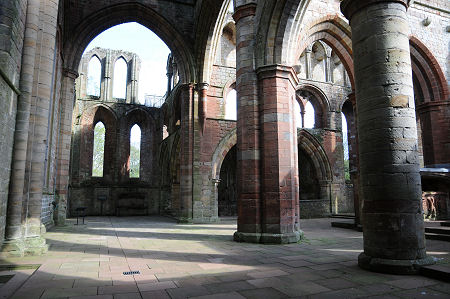 The View from the South Transept |

|
|
|
Visitor InformationView Location on MapTel: 01697 73030. Post Code: CA8 2HQ Grid Ref: NY 556 638 Priory Church of St Mary Magdalene www.english-heritage.org.uk EH: Priory Web Page Opening Hours Admission Accessibility What3Words Location: ///care.foggy.being |
 The Priory from the South |
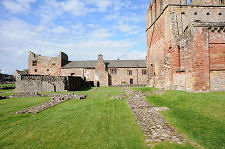 Priory Ruins from the East |
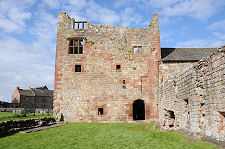 The Dacre Tower |
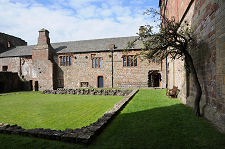 The Dacre Hall & Cloister |
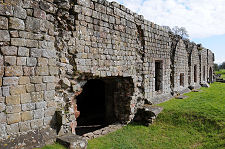 The Undercroft |
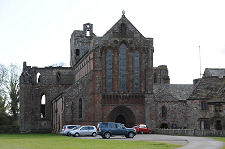 West End of the Parish Church |
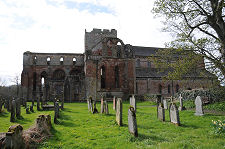 The Priory from the North |
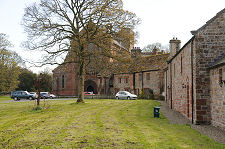 First View of the Priory |
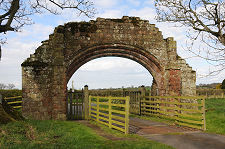 Remains of the Gatehouse |
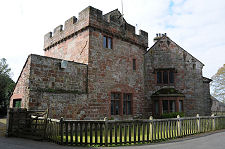 The Vicar's Pele |

